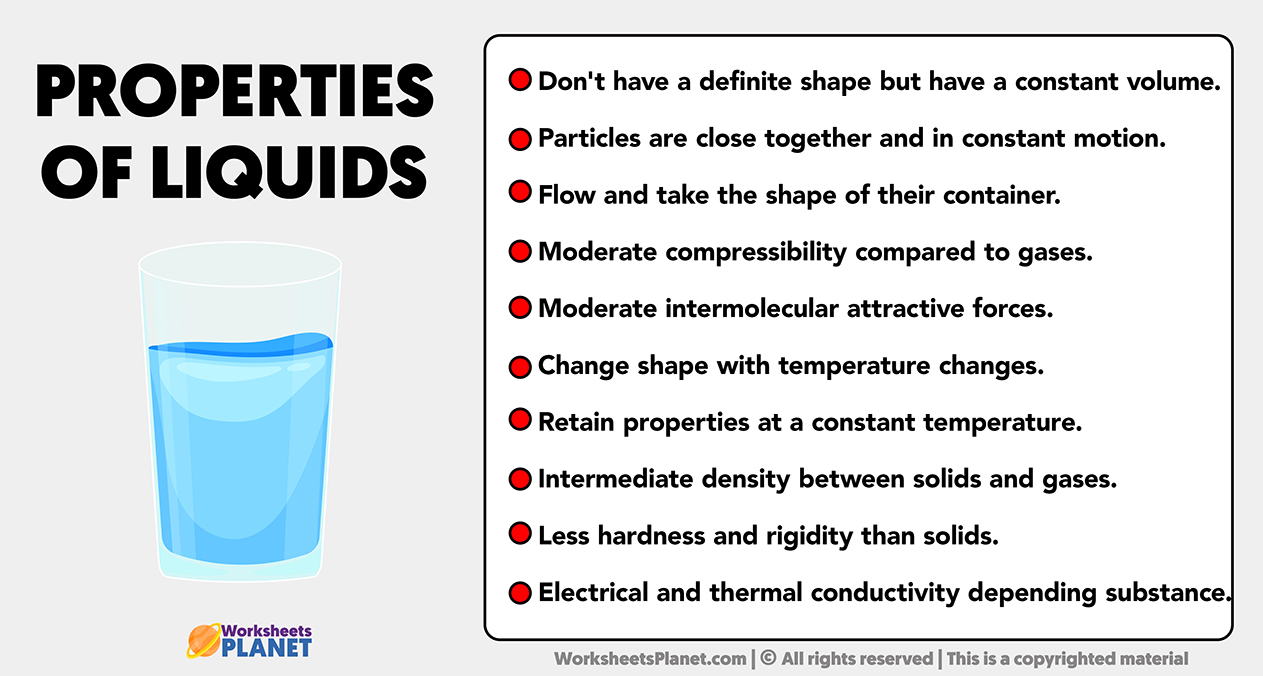A liquid is a state of matter characterized by its ability to flow and take the shape of its container while maintaining a constant volume. Unlike solids, liquids lack a fixed shape but have a definite volume.
The intermolecular forces in liquids are weaker than in solids, allowing particles to move more freely. Water, oil, and mercury are examples of liquid substances.

- Don’t have a definite shape but have a constant volume.
- Particles are close together and in constant motion.
- Flow and take the shape of their container.
- Moderate compressibility compared to gases.
- Moderate intermolecular attractive forces.
- Change shape with temperature changes.
- Retain properties at a constant temperature.
- Intermediate density between solids and gases.
- Less hardness and rigidity than solids.
- Electrical and thermal conductivity depending substance.

